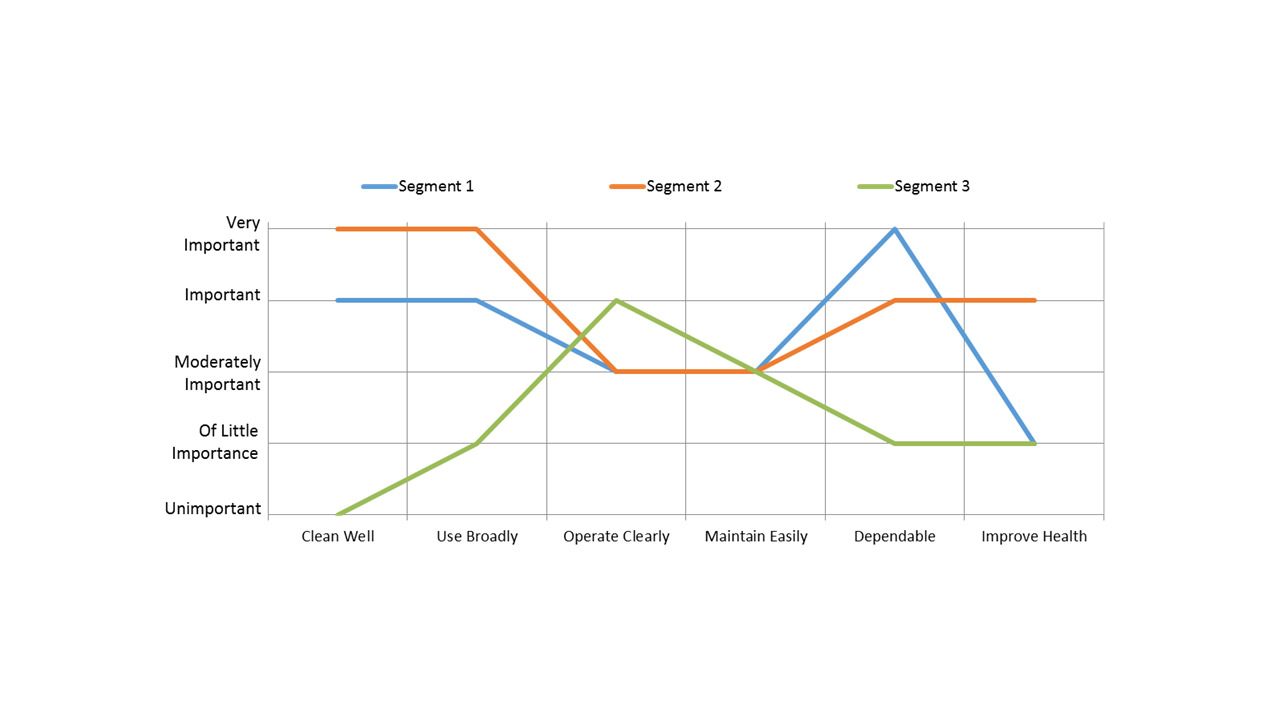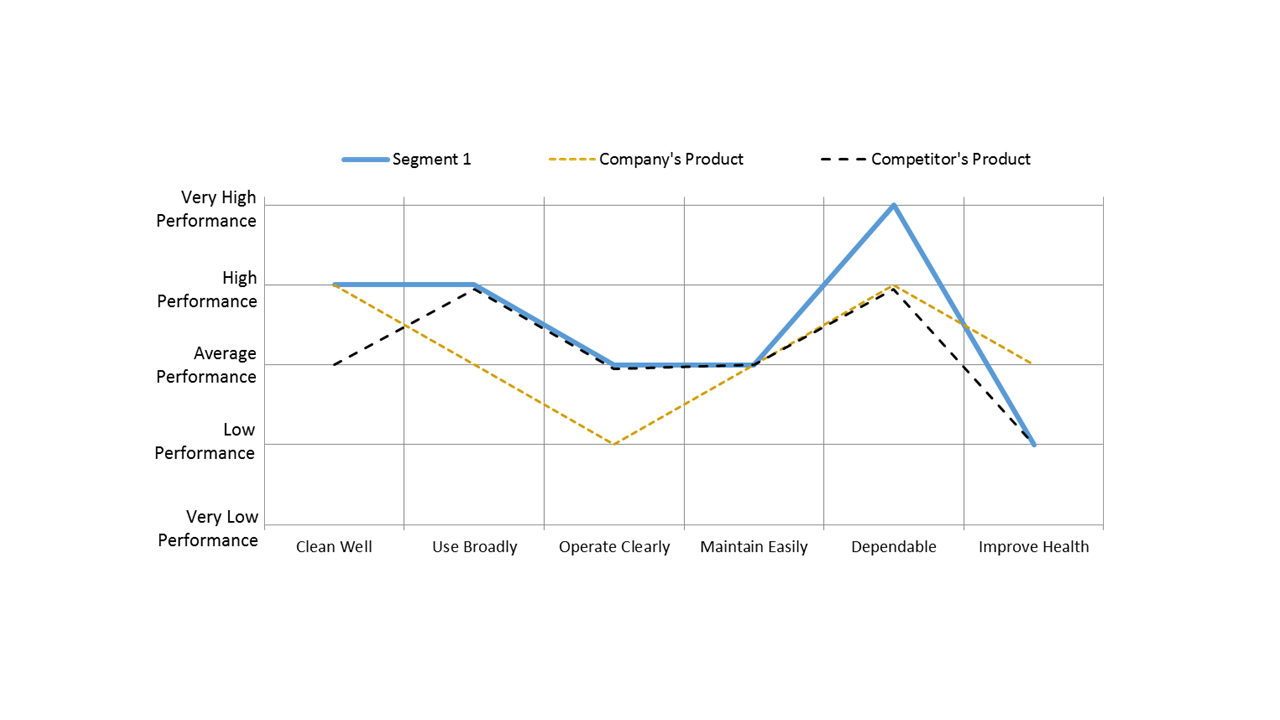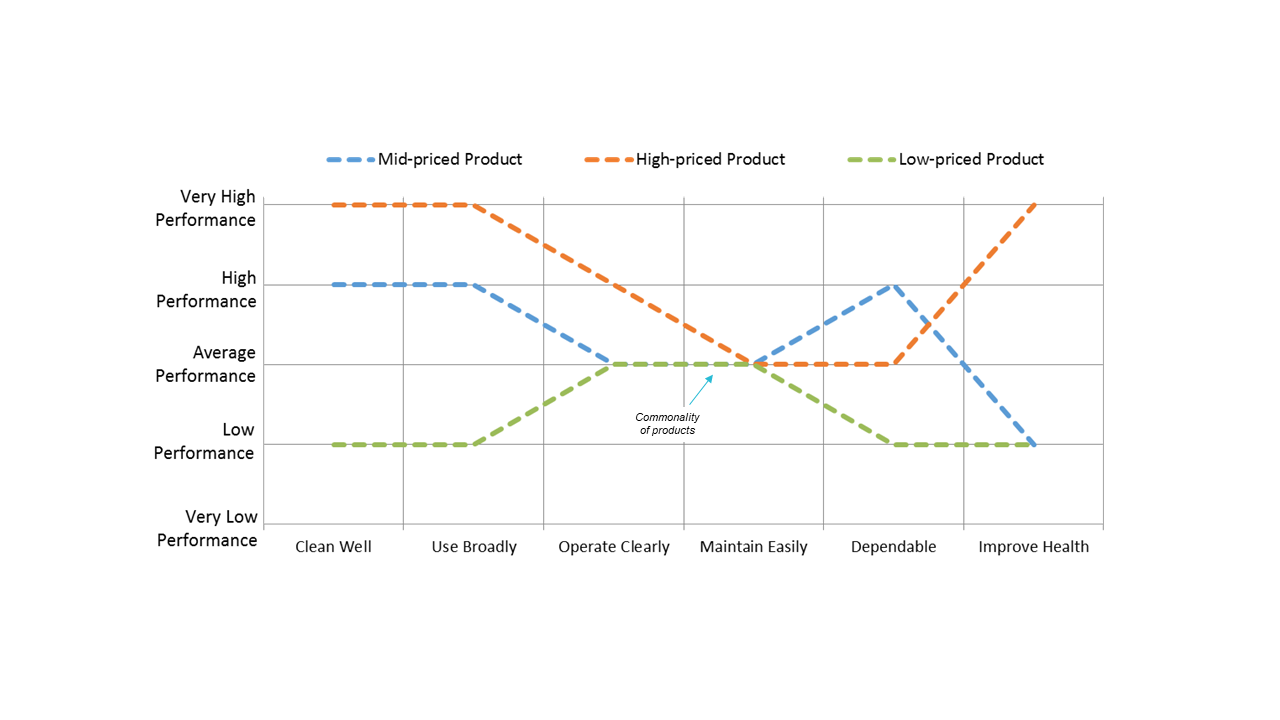To create successful modular systems it is critical to understand who the customers are, and what needs they have. By analyzing what the customers are looking for and how existing products are performing, strategic decisions can be taken about the required flexibility and development of the product platform. These are the fundamental drivers of using modularization to create product platforms.
In this blog, I will discuss how to use a customer canvas to illustrate the differences between needs-based market segments. The same canvas is used to show how products deliver on the expectations of these segments, and it is where opportunities for new and better products are discovered. The canvas is most powerful when the levels of benefit are quantified with objective measure that can be used for benchmarking and establishing product specifications.

Start Outside-in
Which Customers Benefit from the Product Experience?
Customers purchase products to perform certain tasks. Each customer has expectations for what a product should do and what they will gain from the experience. A customer benefit is a short statement that describes what customers gain, and the set of benefits for the whole experience is the basis of market segmentation.
Customer benefits give you a lens to better see the market, with categories related to:
- money
- time
- health
- security
- physical effort
- mental effort
- comfort
- recognition
- prestige.
Products deliver benefits in one – or all – of these categories. The overall scope of the customer canvas is determined by the list of customer benefits and the associated product experience.
Needs-based Market Segments
Customer benefits are a valuable way to describe differences between customers, and markets can then be segmented into groups that rate the importance of the benefits in a similar way. Customers within each needs-based segment seek similar products and can exist all around the world. They have the same kinds of problems, pain points and expectations for what a product should do.
Varying levels of importance for each customer benefit across market segments establishes ideal levels of benefit for products targeted at each segment. Irrespective of whether your company targets one or all market segments, the ultimate goals for products are established by the customers. These are the expectations for measuring the performance of your and your competitors’ products.
Our method for generating needs-based market segments starts with a hypothesis of the segments using the knowledge of the company’s market and product experts. The hypothesis is validated and refined with customer interviews per segment, and the process works equally well for experienced marketeers and companies without any type of market segmentation experience.
Importance of Customer Benefits
The levels of importance for each market segment and customer benefit combine to form the customer canvas. The customer canvas shows the total range of benefits needed within the market and how each segment is looking for a unique combination of benefits. The canvas enables you to illustrate and analyze the different performance levels of products and providers/brands.

Market strategy is put into action with the customer canvas. It shows how to gain competitive advantage and tell the story of what your company wants to accomplish in the market. By connecting this market story to a product story, you can describe how products are developed and changed to support strategy. Watch a webinar about deploying a market product strategy.
Each of the customer benefits are linked to measurable product properties that quantify the delivery of the benefit. Goal values are specified for product properties in order to realize the planned levels of customer benefit to specific market segments. Through this cascade and linkage, levels of benefit in the market story are connected to product strategy and product requirements.
Key Activities with the Customer Canvas
Find Opportunities to Create Value with New Products
Customer canvas is the basis for analyzing products and determining how well they fulfill the expectations of customers. The comparison of customer benefit performance among segments, the company’s products and competitor’s products identifies the potential for new products. Gaps to customer expectations are opportunities for improvement, and where you exceed customer expectations you’ll find opportunities for cost reduction, and similarities with competitor’s products are opportunities for differentiation.

Benchmarking of competitive products is focused on objective metrics including the product properties that are linked to the benefits delivered by the product. New product concepts are presented using the market story, describing how the concept will impact the benefit delivery and the ability to compete within specific segments. Future market trends are also described in terms of how they will impact the customer canvas. If customer expectations increase over time, gaps increase or open up with the current family of products.
Manage a Product Family Portfolio
Product families are also managed with the help of the customer canvas. Each product in a family is targeted at one or more market segments, and the strength of the match-up is evaluated by gaps and competitive differentiation. Products in the family should also be differentiated from one another to support differences in cost, price and brand. Alternatively, all products within a brand should deliver similar levels of benefit, distinctly different from other brands within the same product family.
When all market segments rate the importance of a customer benefit at a similar level, products within the family should not differentiate on the level of this benefit. This is an opportunity to maintain commonalities between products in the family.

The total benefit delivered by a product is the sum of the performance within each customer benefit, or the area under the curve. Relative price differences between products in the family are matched to the differences in the amount of benefit delivered.
Focus on the Voice of the Customer
Customer benefits are the primary categories for focusing market research efforts and collecting customer feedback. Market segments are the company’s perception of the benefit levels customers seek from the products, and they are examined and refined over time. Voice of customer is collected and analyzed within the categories of customer benefit to answer key questions about how the products are performing in the market:
- Are customers receiving the benefit they expect?
- Do they get more benefit from competitive products?
- How do the levels of benefit vary across brands or product price points?
- What are the specific product experiences that are critical to deliver the benefit?
- Which future levels of benefit are needed?
Quantify Market Changes
Changes in customer needs, competition and technology are characterized by their impact to the delivered and desired levels of customer benefit. Customer needs determine the desired levels, and the changes are directly captured on the canvas. New competition and new technology are quantified based on their impact to objective product metrics. The evaluation is clear to all stakeholders when the new performance levels of the metrics are linked to new levels of benefit delivery.
Improve Your Marketing
Go-to-market activities are organized around market segments. Marketing material communicates why a product is well suited for the target market segment and within a family of products, differences are communicated so that a customer can choose exactly the right product. This material also helps customers translate product specifications into what it means for their product experience and what level of benefit they will gain from the product.
Needs-based market segments are also mapped to other types of segmentation, including demographics, behaviors and attitudes. This mapping enables direct marketing campaigns to target specific groups in specific locations linked to specific products and customer benefit levels.
From Market Segments to Product Planning
A modular product architecture identifies and strategically assigns product functions to building blocks which are combined to form the complete product. These building blocks are modules when the interfaces between them are standardized. With stable and standardized interfaces, market-driven variants of modules can be developed and freely exchanged to provide a vast range of products using far fewer unique part numbers. The resulting product architecture enables economies of scope, with a large family of products, and economies of scale, reduced business complexity.
A corresponding market architecture clearly defines the range of products that are included in the product family. Upstream marketing activities tell the market story in terms of products that deliver specific levels of customer benefit. This information is critical to decide which modules have many variants and which modules are common. The product story then specifies the complete range of performance that must be provided within a family.
Market architecture enables you to understand why, where and how much variance is needed in the product family. Developing the model before designing products reduces the time it takes to decide the scope of modular design and supports what you and your company want to achieve in the market. With market segmentation you can build customer needs into product planning and accelerate value creation.

AUTHOR
Scott Jiran
Senior Consultant
T:+1 (952) 854 6800
E: Scott.jiran@modularmanagement.com



